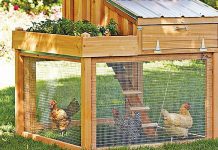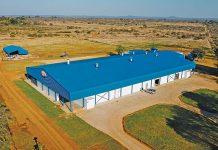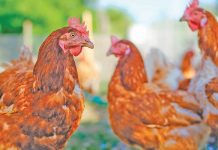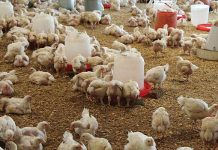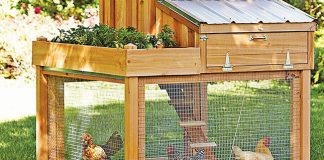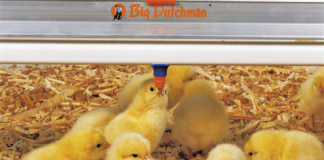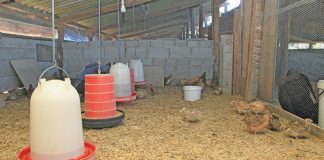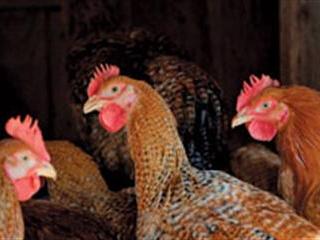
Health, profit and performance of farm and animal can all be affected by mycotoxins.Acute mycotoxicosis is poisoning associated with exposure to mycotoxins. A mycotoxin risk management programme is a key factor in ensuring peak animal performance. Albert van Rensburg, chief operations officer for animal nutrition company, Biomin South Africa, explains that pro-actively integrating mycotoxin risk management with poultry management ensures that producers and birds benefit.
The birds have improved immune functioning, optimal nutrient absorption, feed intake and reproductive health. “An acute mycotoxicosis outbreak is a rare event in modern animal production. A ‘mycotoxin’ is the toxic chemical products produced by fungi that colonise crops before or after harvest,” says Van Rensburg.

One fungal species may produce many different mycotoxins and/or the same mycotoxin as another species. Any growing crop is susceptible to fungal infection. While the fungi may not survive the transition from land to feeding trough, mycotoxins, invisible to the naked eye, will. High quality feed may harbour undetected mycotoxins.
Symptoms
Symptoms of mycotoxicosis depend on a number of factors, including the type of mycotoxin, its concentration and the length of an animal’s exposure to the toxin. Low mycotoxin doses, which often go undetected, reduce efficiency of production and increase the susceptibility to infectious diseases. “Mycotoxins at lower levels interact with other stressors, leading to decreased performance, increased disease outbreaks and reduced reproductive performance,” explains Van Rensburg.
“To the poultry producer, these subclinical disease problems are of greater economic importance than losses from acute effects and are more difficult to diagnose. “Mycotoxins exert their effects through four primary mechanisms: suppression of the immune system, reduced nutrient absorption and impaired metabolism, feed intake reduction or feed refusal, and alterations to the endocrine and exocrine systems.”
Albert van Rensburg
Diagnosis
Recognition of mycotoxin impact on animal production has been limited by the difficulty of diagnosis. Symptoms are often non-specific and the result of a progression of effects, making diagnosis difficult or impossible. The difficulty of diagnosis is increased due to limited research, occurrence of multiple mycotoxins, non-uniform distribution, interactions with other factors and problems of sampling and analysis.
Van Rensburg explains that mycotoxicosis symptoms in farm animals vary depending on the mycotoxins involved and their interactions with other stress factors. Heat stress, poor ventilation, air quality including high humidity, dust or airborne pathogens, crowding, viral or bacterial challenges or other stressful conditions lead to an animal’s increased susceptibility to the effects of mycotoxins.
Stressed animals are most affected, perhaps because their immune systems are already compromised. There is generally an increase in the incidence of metabolic disorders and animals are more susceptible to infectious diseases along with reduced efficacy of vaccination programmes. Even small amounts of mycotoxins in feed can have a detrimental effect on the immune system.
Heat stress
According to the management manual of broiler genetics company, Ross Poultry Breeders (RPB), heat stress is one of the most significant stress factors in poultry. “The effects of heat stress can be minimised by altering the production environment to reduce the temperature experienced by the birds and/or by allowing the birds to control their temperature through physiology or behaviour.”
The manual explains that points for controlling heat stress in poultry include reducing the stocking density (see Table 1), ensuring that fresh drinking water is available at all times, feeding birds during the coolest times of day, increasing air flow over the birds to 2m to 3m per second using fans, and minimising the effects of radiant heat from the sun. Broiler houses should be located and positioned to minimise heat absorption from the environment.
Houses should be adequately insulated and reflective surfaces should be used to reflect radiant heat. In situations where the poultry house temperature regularly exceeds 20°C for significant periods, cooling systems should be installed. “Many trials are performed in the fields of nutrition, genetics and animal welfare to increase farms’ profitability,” says Van Rensburg. “Unfortunately animals frequently do not perform according to their capability due to mycotoxins and much of this economic loss is not accounted for. The interaction of mycotoxins with other factors deserves more attention.”
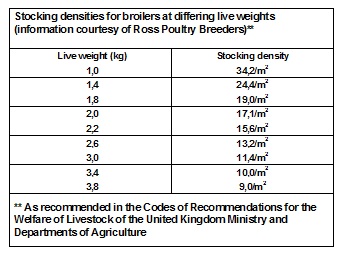
Management programme
Animal health and nutrition company, Alltech, has developed a programme to help control mycotoxins through a combination of mycotoxin management programmes and technologies. Alltech’s global Mycotoxin Management Team (MMT) will use one of the key elements of the programme, the 37+ Programme, to detect and address risks associated with more than 37 mycotoxin types throughout the animal feed chain.
“It is now more important than ever to have a documented mycotoxin control programme in place as the price of feed rises, the use of alternative raw ingredients increases, and the need for improved feed efficiency is paramount,” says Dr Swamy Haladi, Global Technical Manager for Alltech’s MMT.
“We know that mycotoxins are going to be more prevalent in certain processed raw materials and also that they can impact negatively on health, feed efficiency and profitability. The potential threat of mycotoxin residues to human health should also be factored in.”
Feed problems
Kevin Lovell, CEO of the Southern African Poultry Association, says that mycotoxins enter chickens through their feed, primarily maize. “There are literally thousands of mycotoxins that affect grain but only a few are considered production risks.
“Some of those have been detected in South African feed. The major feed companies test for mycotoxins in their feed ingredients and also in the finished product.
“As the fungi that produce the mycotoxins need moisture to grow effectively, wet grain or wet spots in a silo are risky.”
Lovell says mycotoxin testing is not always straightforward and so it is difficult to know the true extent of mycotoxin-induced chicken production loss in SA. Most mycotoxins at the levels detected in feed don’t kill the animals but affect one or more production and health aspects.
Glossary
Mycotoxins – various toxic substances produced by fungi. Some may affect food and others are alleged to have been used in biological warfare.
Metabolite – a substance produced during metabolism.
Metabolism – The chemical processes occurring within a living cell or organism necessary for the maintenance of life. In metabolism, some substances are broken down to yield energy for vital processes while other substances, necessary for life, are synthesised.
Sub-clinical – relating to the stage in the development of a disease before the symptoms are observed.
Endocrine system – the system of glands that produce endocrine secretions to control bodily metabolic activity.
Exocrine system – externally secreting glands, such as a salivary gland or sweat gland that release their secretions directly or through a duct.
Pathogen – any disease-producing agent, especially a virus, bacterium or other micro-organism.
Physiology – the processes and functions of all or part of an organism.
Source: www.thefreedictionary.com
Contact Biomin South Africa on 018 468 1455/6 or email at [email protected]
Contact Alltech South Africa on 021 865 2669 orwww.alltech.com
Contact Ross Poultry Breeders on 016 366 0249 or email at[email protected]
Contact The Southern African Poultry Association on 011 795 9920 or email at[email protected]



